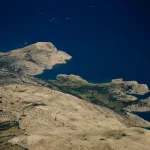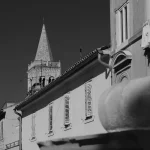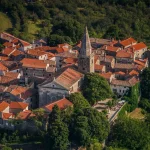A brief history
Not to be confused with Dalmatian, the Dalmatic language is now extinct. It belonged to the wider group of Italo-Dalmatian family of languages and was once spoken along both the Croatian and Montenegrin coastlines. What makes Dalmatic so interesting is that the date of its disappearance from use is very precisely known – June the 10th, 1898, when the last speaker of a form of this language (known as the Vegliot dialect), Tuone Udain, died. You can read more about Tuone, who was born on Krk and was unfortunately killed during a road mine explosion, by clicking here.
Dalmatinski (Dalmatian) and Dalmatski (Dalmatic), what’s the difference?
Here’s where it gets linguistically tricky thanks to our good old (and awkward) friend – terminology. In the Croatian language, Dalmatic (Dalmatski) is the common name for this language, and it should never be confused with Dalmatian (Dalmatinski). One is a Slavic language and one is a Romance language.
The Dalmatian language, i.e. a dialect or a set of dialects, refers to various spoken versions of the Croatian language, which belongs to the wider group of Slavic languages. The Dalmatic language does not belong to the Slavic language family and is actually a Romance language which originated from Latin and was spoken all along the eastern Adriatic coast, this means that Dalmatian and Dalmatic are not at all closely related outside of the basic fact that both Slavic and Romance languages share a common ancestor as they belong to the far wider group of Indo-European languages.
Where did Dalmatic come from?
The Dalmatic language first came to be way back during Middle Ages as a direct continuation of spoken Latin in the then Roman Dalmatia, sharing the same spontaneous origins of most other Romance tongues. Latin language was the most important and most heavily used language at the time, and Dalmatic wasn’t used for any official purposes, with the occasional exception of Dubrovnik (Ragusa) where it has been discovered in some old notarial documents. The oldest Dalmatic texts we know of date from way back in the thirteenth century, and were written in the Ragusan (Dubrovnik) subdialect.
How did it become extinct?
The use of Croatian (a Slavic language) began to gain a lot of ground and spread across a wider and wider geographical area, and Italian and Venetian also took hold across vast parts of modern Croatia owing to the power of the Venetians at the time. Unfortunately, this saw spoken Dalmatic become extinct, with the Zadar version of spoken Dalmatic likely dying out first, and Ragusan ceasing to exist during the sixteenth century.
Native Dalmatic speakers once resided on the Croatian islands of Rab, Cres and Krk, in numerous coastal Croatian cities, including Trogir, Split, Dubrovnik and Zadar, and further south across the border in neighbouring Montenegro (Kotor). The most well known regional Dalmatic dialects were Ragusan (Dubrovnik), Vegliot (Krk), and the local dialect spoken in Zadar (Jadera).
For more on the Croatian language, including learning it, looking into the history of the dialects, subdialects and extinct languages, and even learning to swear, make sure to check out our lifestyle section. A new article on the Croatian language is published every Monday.











